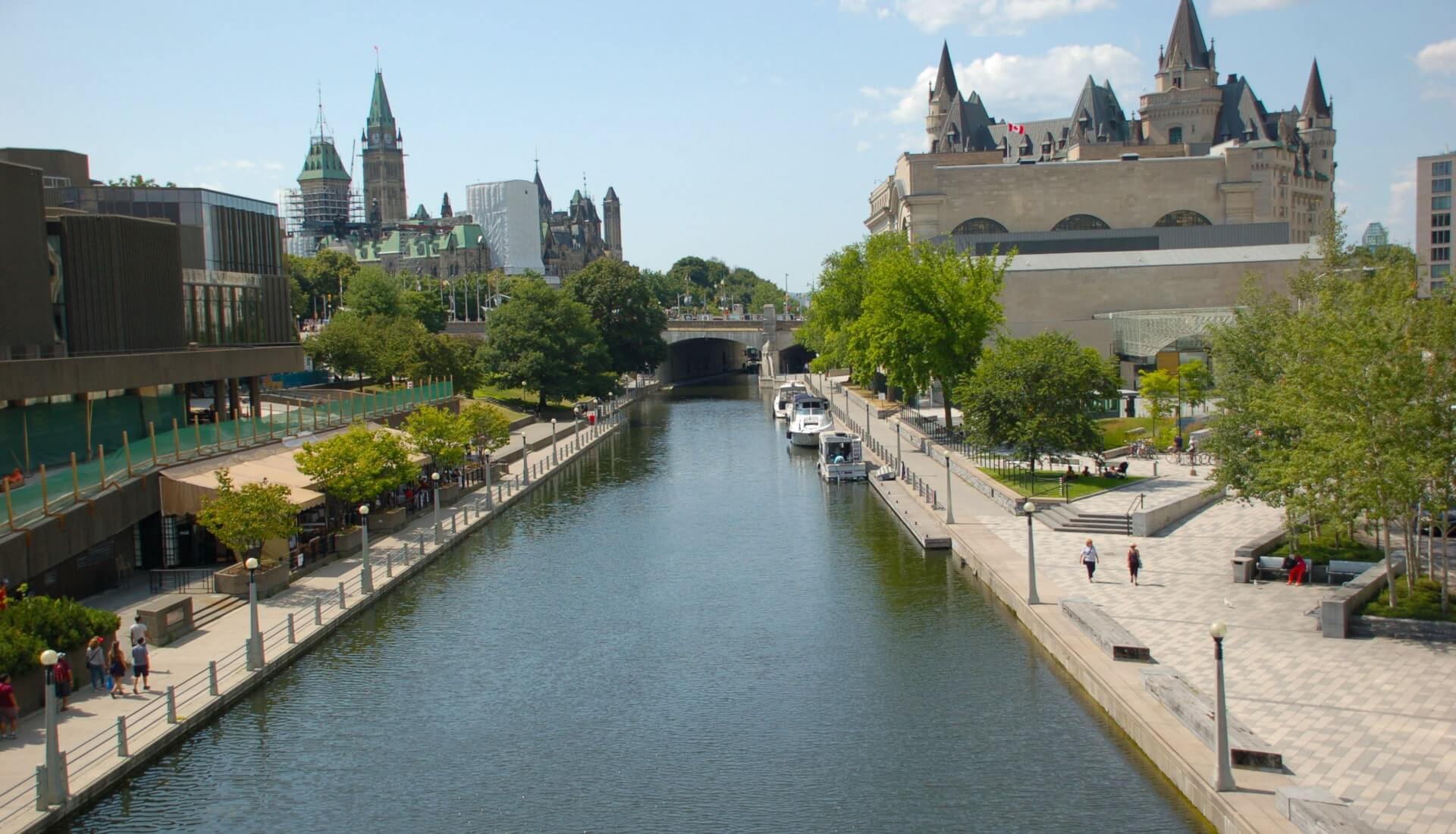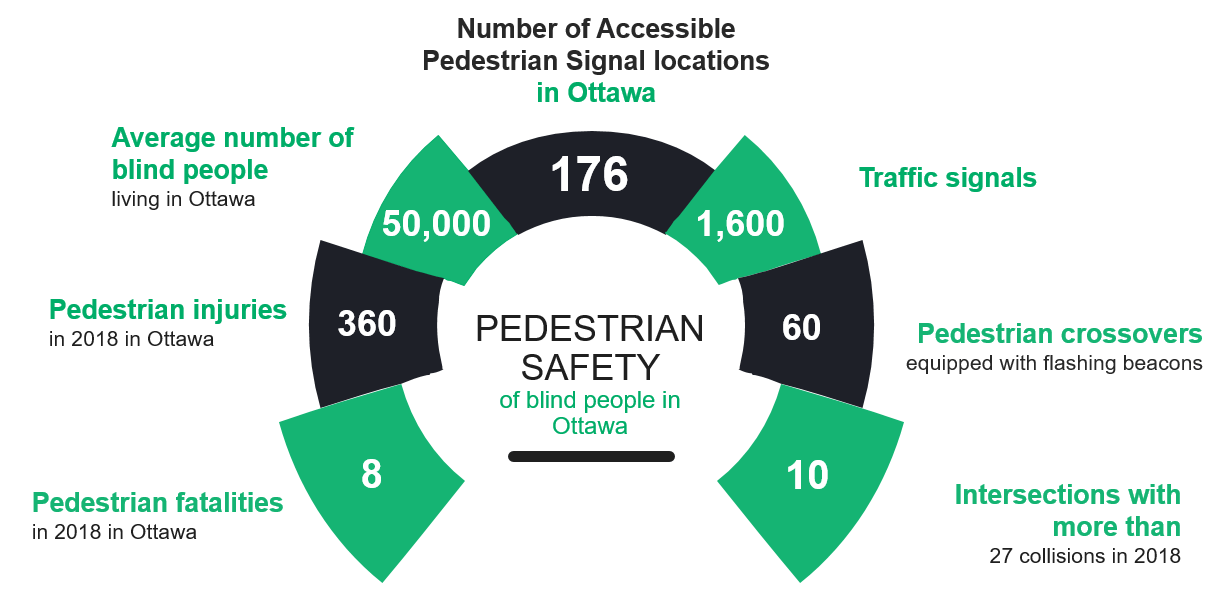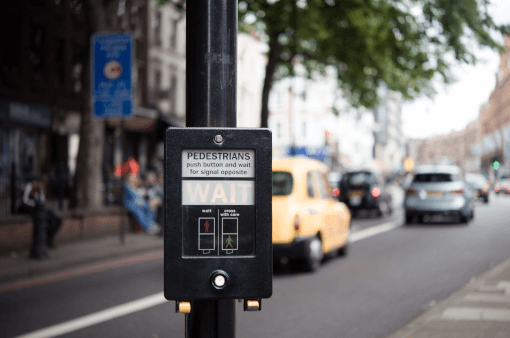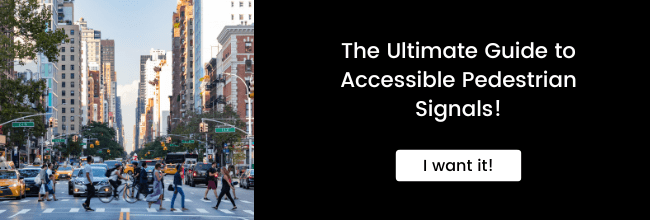
Accessible Pedestrian Signals (APS) are Accessibility for Ontarians with Disabilities Act (AODA) compliant signals that help the blind and visually impaired cross the street safely relying on audio cues. They provide valuable assistance at complex or noisy pedestrian crossings when only relying on the traffic flow can prove to be at risk.
Their installation is an integral part of accessibility policies of major American and Canadian cities. Ottawa is one of those cities that put people first.
In a city where around 50,000 blind people have difficulties getting around, Ottawa accessibility design standards have been developed to encourage diversity, remove physical barriers and provide solutions embracing the principles of “universal design”.
These standards require APS to be provided where new pedestrian signals are being installed or where pedestrian signals are being replaced. However a fair amount of locations still remain unequipped and the number of pedestrian injuries and fatalities highly dissuades blind people from crossing streets.
This infographic intents to highlight the importance of implementing more APS units in Ottawa.

For more information about Toronto APS policy, read this article:
media

In a city where around 50,000 blind people have difficulties getting around, Ottawa accessibility design standards have been developed to encourage diversity, remove physical barriers and provide solutions embracing the principles of “universal design”.
writer

Zoe Gervais
Content Manager
stay updated
Get the latest news about accessibility and the Smart City.
other articles for you

Open Data Is Key to Fostering Universal Accessibility
Open data represents an opportunity for cities to reach universal accessibility. It shows the missing links of the mobility chain.
Our Audio Beacons Guide the Blind and Visually Impaired at the Helsinki Subway
The Helsinky subway improved their audio signage system by installing on demand and remotely activated audio beacons.
7 Good Reasons to Install Audio Beacons at Your Public Transport Network
Audio beacons are an efficient way to provide more autonomy to blind and visually impaired people. They can easily use public transport.

Will Remote Activation Become the Norm for Accessible Pedestrian Signals?
More and more cities like New York have been exploring remote activation to trigger accessible pedestrian signals.
share our article!
more articles

Disability Statistics in the US: Looking Beyond Figures for an Accessible and Inclusive Society
Disability Statistics in the US: Looking Beyond Figures for an Accessible and Inclusive Society Around 61 million adults in the United States live with a disability. Diving into disability statistics in the US will help us know exactly who is concerned and what...
Our Audio Beacons Guide the Blind and Visually Impaired at the Helsinki Subway
Our Audio Beacons Guide the Blind and Visually Impaired at the Helsinki SubwayOur audio beacons equip the new line of the Helsinki subway in Finland. They help blind and visually impaired people locate the points of interest of a station. For users with visual...

Will Remote Activation Become the Norm for Accessible Pedestrian Signals?
Will Remote Activation Become the Norm for Accessible Pedestrian Signals?Without pushbutton, there are no accessible pedestrian signals. That’s how APS work in the U.S. But more and more cities have been exploring remote activation like New York City. The Department...

Hearing Impaired People: a Multitude of Profiles for Different Needs
Hearing Impaired People: a Multitude of Profiles for Different Needs Did you know that hearing impaired people have several profiles and that the way they identify themselves is important? You may be familiar with deaf and hard of hearing people but for each of...
NEVER miss the latest news about the Smart City.
Sign up now for our newsletter.
Unsubscribe in one click. The information collected is confidential and kept safe.
powered by okeenea
The French leading company
on the accessibility market.
For more than 25 years, we have been developing architectural access solutions for buildings and streets. Everyday, we rethink today’s cities to transform them in smart cities accessible to everyone.
By creating solutions ever more tailored to the needs of people with disabilities, we push the limits, constantly improve the urban life and make the cities more enjoyable for the growing majority.



